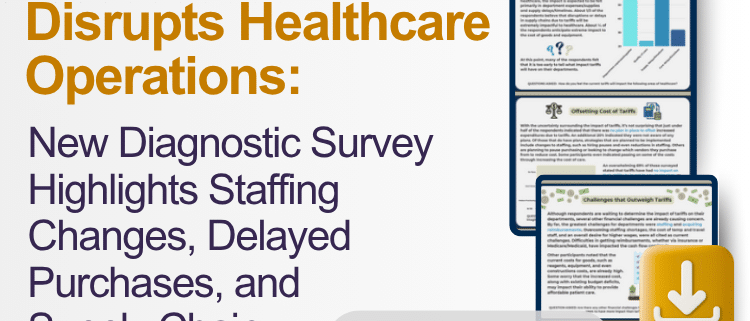[ARLINGTON, VA., July 28, 2024] — IMV, part of the Science and Medicine Group and the leading market research and business intelligence provider to the laboratory diagnostic industry, is pleased to announce the initial winners of the 2024–2025 IMV ServiceTrak™ Clinical Laboratory Awards. These prestigious awards celebrate industry excellence by recognizing top clinical laboratory manufacturers across multiple instrument categories.
Award presentations will take place July 27–31, 2024, during the ADLM Annual Conference in Chicago, IL — a premier event for laboratory professionals.
Each year, laboratory professionals from more than 1,150 clinical testing locations, representing 1,900 instruments, rate their satisfaction with manufacturers in three key performance categories:
- Best Customer Satisfaction: highest likelihood of repeat purchase
- Best System Performance: highest overall system performance rating
- Best Service: highest overall OEM service rating
The 2024–2025 awards are based on this direct feedback. The initial group of awardees includes top-performing manufacturers in Chemistry, Immunoassay, and Integrated Systems. Additional modalities and category winners will be announced in the coming months.
🏆 2024–2025 IMV ServiceTrak™ Clinical Laboratory Award Winners (Initial Round)
Chemistry
- Best Service: Roche
- Best Customer Satisfaction: Roche
- Best System Performance: Roche, QuidelOrtho
Immunoassay
- Best Customer Satisfaction: Roche
- Best Service: bioMérieux, Inc.
- Best System Performance: bioMérieux, Inc.
Integrated Systems
- Best Customer Satisfaction: Roche
- Best System Performance: Roche, QuidelOrtho
- Best Service: Roche, QuidelOrtho
About IMV’s ServiceTrak™ Program
IMV, part of Science and Medicine Group, produces an annual series of proprietary ServiceTrak™ Clinical Laboratory reports derived from extensive phone and online interviews with laboratory testing professionals in U.S. hospitals. These reports present an independent analysis of service trends in laboratory diagnostics and include manufacturer ratings for each instrument type.
- Rating Scale: Satisfaction is rated on a 10-point scale (10 = “excellent,” 1 = “very poor”)
- Highly Satisfied (%HS): Ratings of 9 or 10
- Award Criteria: Awards are given to manufacturers with the highest %HS scores in Customer Satisfaction, System Performance, and Service
- Highly Satisfied (%HS): Responses of 9 or 10 are considered “highly satisfied.”
IMV ServiceTrak™ has been an industry benchmarking standard for more than 25 years, capturing the customer experience from installation to end-of-life.
About IMV
IMV Medical Information Division, established in 1977, is a trusted marketing research and consulting firm that specializes in the dynamic fields of diagnostic imaging and clinical diagnostics. Our commitment to in-depth market analysis and comprehensive research services empowers clients to excel in strategic planning, enhance customer satisfaction, drive product development, and launch successful sales initiatives. All of IMV’s reports and data solutions are based on primary research by diagnostic imaging experts. As a reliable provider of market intelligence, IMV gives you the comprehensive information you need to stay two steps ahead and make decisions with confidence!
For media inquires or to learn more about IMV’s ServiceTrak reports, please contact:
Media Contact
IMV Marketing
(703) 778-3080
www.imvinfo.com
[email protected]


